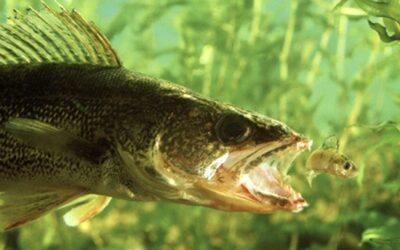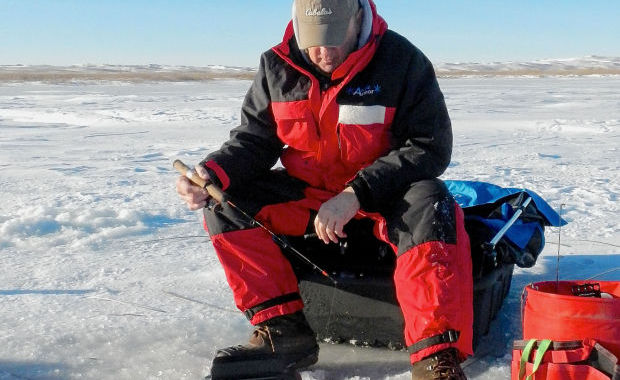With 68-degree temperatures predicted the week I’m writing this column, I’m in the mood to get ready for spring fishing.
Last spring, I was in such a hurry to get out and do some summer fishing, I threw things into my tackle bag and didn’t think about re-organizing it. Unfortunately, I did the same thing with my fall fishing gear and now my tackle bag looks as if a bomb went off in it. My walleye spinners are intertwined with my live bait rigs and my jigs and crankbaits stuck together.
Most of the time, I’m Mister organized, but not this time of the year as everything is in turmoil and I have to get things straightened out before the water opens up.
All of my Plano 3700 tackle boxes in my walleye tackle bag are lettered; jigs, live bait rigs, crankbaits and bottom bouncers, so I know where this gob of tackle that’s stuck together should go.
The first thing I’ll need to do, because it takes the longest is to untangle my live bait rigs from the spinners. This is a real pain, especially now that most of my tackle is tied with lighter line and my eyes aren’t as good as they used to be.
I went to lighter line on these to eliminate the coils or memory that I had with the heavier line. With the heavier line, the spinners and rigs didn’t lay out as smooth or run through the water straight, so by going to lighter line, my line has less memory.
Once I have them untangled, I’ll coil them, put them in small Ziploc bags which allows me to see what’s there and return them to my livebait tackle box. It may take a little extra time, but worth it when I hit the water this spring.
Next, I’ll work on my jigs, the ones that were not only tangled with my other baits, the ones that were wet when I threw them into my bag.
It doesn’t take much to clean them off; all that’s needed to clean them is to wipe them off with a clean rag. On jigs, the first thing you’ll want to do is to remove any hardened bait; minnows, pieces of crawlers etc. that wasn’t removed before you tossed them into your tackle bag. If you were using Berkley Gulp, it may take a sharp knife to cut through it, as Gulp will become rock hard if not returned to its original airtight container.
The main thing you need to pay attention to before putting them away is the hook; you want to make sure it’s sharp. To check it for sharpness take the hook and run it across your fingernail, if it’s sharp, it should scratch the nail. If they don’t, grab your file or diamond hone and sharpen them until they do.
With crankbaits, you’re going to have to wipe them down, get the crud off them and then check the treble hooks, when crankbaits snag, the treble hook is the culprit and to get them loose requires a lot of pressure, which can bend or disfigure your treble hook. Check them to make sure they’re straight and if not, straighten them using needle nose pliers. You shouldn’t need much pressure to bring the hook back in line but, if the hook has become rusted, it may break off when you straighten it. If it does, it’s not a problem, as replacement treble hooks are easy to find. Now you’ll want to check to see if the treble hooks are sharp and if not, sharpen them as was mentioned previously in this column.
This time of the year, when there isn’t a whole lot to do in the outdoors it’s a good time to get your tackle cleaned up and if your tackle boxes inside your bag identified, as it makes it easier for you to find what you need on the next trip.

Now’s the time to get you’re tackle in order, untangle your walleye spinners and live bait rigs, sharpen your dull hooks and put the tackle lying around in your tackle bag or box where it belongs, so you’re ready when the water opens up.
Now that we have our tackle in order, it’s not a bad idea to check over your rods, reels and line starting with your line guides on the rod. Guides are made from a lightweight material and can be bent, so you’ll want to look them over making sure they’re lined up correctly and not bent. If you find one that’s bent, they can be easily straightened with needle nose pliers.
Next, you’ll want to make sure that you don’t have a cracked or rough guide. To check your guides, all is needed is a cotton swab, run it along the inside edges of the guide, where the line would contact. If there’s cotton stuck to the guide at any point, run your finger along it to see how bad it is, if it’s not rough, you should be OK, but remember where that spot was and check it from time to time to make sure it hasn’t got worse. A bad guide will cut your line when you’re casting and quickly break your line when fighting a big fish.
Check your reel to make sure that it’s working smoothly, if not, it may need lubricating. You’ll want to check to make sure all screws, nuts are tight, and that your drag is working properly.
One of the biggest mistakes anglers make is to not, back off on the drag when you put your rods away at the end of the year. The drag system on most reels is no more than several fiber washers stacked on top of each other. If they are wet which they can be when you put your reel away, and the drag isn’t backed off, they can stick together. Then the next time you need a drag to work, because the washers are stuck together, the fiber washers won’t slip, your drag won’ work, and chances are whatever you had hooked will break off.
If you didn’t, back your drag off last fall now would be a good time to do it and if things work out the way you planned, the washers in your drag will separate before your next fishing trip and be ready to go.
Fishing line, especially monofilament can break down and if left in your pickup or car for an extended period it’s break strength is affected by the sunlight.
The longer you have the line on your reels the more memory they’ll have, memory is the kinks and curls that your line takes on after it’s been on a reel for a long time. If you’ve had the line on your reel longer than you can remember you best replace it.
Check your line, by running your fingers down the line, if you feel any nicks or rough spots, cut away the rough line and if you filled your reel correctly, there may be enough line to get one or two fishing trips out of it. I’d replace the line as line is inexpensive and your line is the only thing connecting you with that big fish.
If you decide to replace your line, be sure you put it on correctly and don’t overfill the spool. When you purchase quality new line, there’s information in the box showing you how to spool the reels.
Spinning reels are filled by laying the spool on a flat surface and then reeling the line in and from time to time, you’ll want to flip the spool over as this allows the line to lay on your reel correctly. If you’re re-spooling a bait-casting reel, the best way to refill them is to put a pencil or dowel through the spool and have someone hold it and have them put a slight pressure on the spool while you reel it onto your reel.
You’ll want to make sure you don’t under fill or overfill your reel, as it will cause problems when you’re casting. It’s best to fill your reel within 1/8 inch of the top, as this will allow the line to flow smoothly off the reel for better casting.
In fishing, it’s the little things that count and by having those little things, like your tackle in order, you won’t have any surprises when it’s time to hit the water.





0 Comments